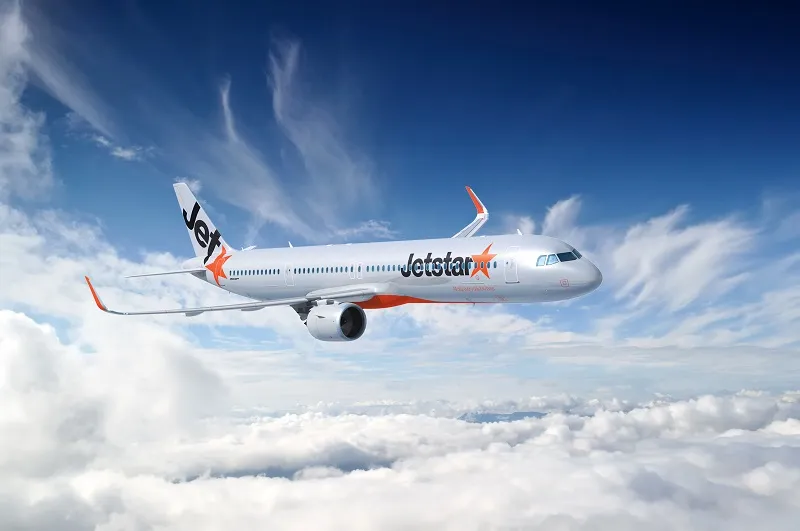
New weather radar means a safer, smoother ride for Jetstar passengers.
Nov 11, 2019

Jetstar has introduced advanced weather radar technology to enhance passenger safety and comfort during flights. This state-of-the-art system allows pilots to detect and navigate around severe weather conditions more effectively, minimizing turbulence and ensuring a smoother journey. With real-time updates on weather patterns, the radar equips the flight crew with critical information, enabling them to make informed decisions and optimize flight paths. As a result, Jetstar passengers can enjoy a more reliable travel experience, with reduced delays and improved overall safety, making their journeys not only more enjoyable but also reassuringly secure.
Advancements in Weather Radar Technology
Jetstar has recently upgraded its fleet with state-of-the-art weather radar systems, significantly enhancing the safety and comfort of its passengers. This new technology allows pilots to detect and navigate severe weather conditions more effectively, leading to smoother flights and reduced turbulence. The implementation of these advanced radar systems is a crucial development for the airline industry, and it underscores Jetstar's commitment to passenger safety.
How Weather Radar Works
The new weather radar uses advanced algorithms and high-resolution imaging to provide real-time data on weather conditions. It detects not only precipitation but also wind shear, storm cells, and other atmospheric phenomena that can impact flight safety. By analyzing this data, pilots can make informed decisions about flight paths and altitudes, ensuring a safer travel experience.
Benefits for Passengers
With the introduction of the new radar technology, Jetstar passengers can expect several key benefits:
- Enhanced Safety: The improved radar capabilities allow for better detection of severe weather, reducing the risk of encountering dangerous conditions during flights.
- Smoother Flights: By avoiding turbulent areas identified by the radar, pilots can ensure a more comfortable journey for passengers.
- Timely Updates: Real-time weather information enables pilots to provide timely updates to passengers, enhancing their overall travel experience.
Comparison of Old vs. New Weather Radar Systems
The following table outlines the differences between the old and new weather radar systems used by Jetstar:
| Feature | Old Weather Radar | New Weather Radar |
|---|---|---|
| Detection Range | Up to 200 miles | Up to 400 miles |
| Resolution | Low | High |
| Data Processing Speed | Standard | Real-time |
| Weather Phenomena Detection | Basic | Advanced (including wind shear) |
Impact on Flight Operations
The implementation of the new weather radar system has a profound impact on Jetstar's flight operations. By equipping pilots with cutting-edge technology, Jetstar can optimize flight routes, save fuel, and reduce delays caused by adverse weather conditions. This operational efficiency ultimately leads to cost savings for the airline, which can be passed on to passengers in the form of lower fares.
Passenger Experience: Testimonials
Passengers have begun to notice the positive changes brought about by the new weather radar system. Many have reported smoother flights and fewer instances of turbulence. Here are some testimonials from Jetstar travelers:
"I didn't feel a single bump during my last flight with Jetstar. It was the smoothest journey I've ever had!" – Sarah T.
"Knowing that Jetstar is using advanced weather radar makes me feel safer when I fly. It's a game changer!" – James L.
Future Developments
Jetstar is committed to continuously improving its services and ensuring the highest safety standards for its passengers. The introduction of the new weather radar is just one of many initiatives aimed at enhancing the flying experience. Future plans include further upgrades to flight management systems and increased training for pilots to maximize the benefits of this advanced technology.
Conclusion
The adoption of new weather radar technology by Jetstar represents a significant leap forward in ensuring a safer and smoother ride for passengers. With its enhanced detection capabilities and operational efficiencies, Jetstar is setting a new standard in the airline industry. As travelers increasingly prioritize safety and comfort, Jetstar's commitment to innovation will undoubtedly enhance its reputation and attract more customers.
In conclusion, passengers can look forward to a more enjoyable flying experience with Jetstar, thanks to advancements in weather radar technology. It reflects Jetstar’s dedication to passenger safety and comfort, making every flight a step towards a better travel experience.
Related Articles

Explore Thailand: The Best Islands to Visit for Paradise, Adventure, and Relaxation

The Ultimate Guide to the Best Islands in Thailand for Your Next Getaway

Do babies need passports? How to get a passport for a newborn

How to get a U.S. passport fast: here’s how to expedite the process

What is Mobile Passport Control: 5 reasons why you should use it

SENTRI vs. Global Entry: A detailed guide

Do you need a passport to go to the Bahamas? Let’s find out

Do you need a passport to go to Mexico? A detailed guide

Do you need a passport to go to Canada? We got the answer

Do You Need a Passport for a Cruise: An Essential Travel Guide

Booster Seat Requirements: All the Rules to Follow in Your Rental Car

What Are the World’s Most Powerful Passports, and How Does Yours Rank?

How to Take a Passport Photo at Home: A Helpful Guide

You've got to have heart! Southwest's new livery

Your opinion: Should water be free on low cost carriers?

Young women bolder than guys as solo travellers
